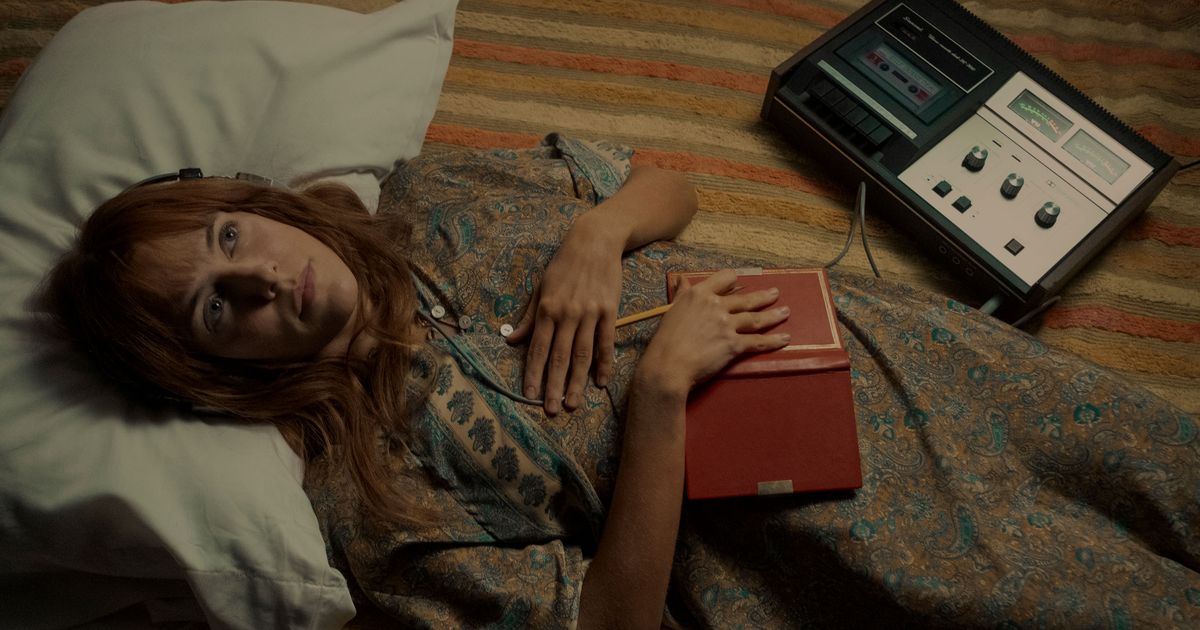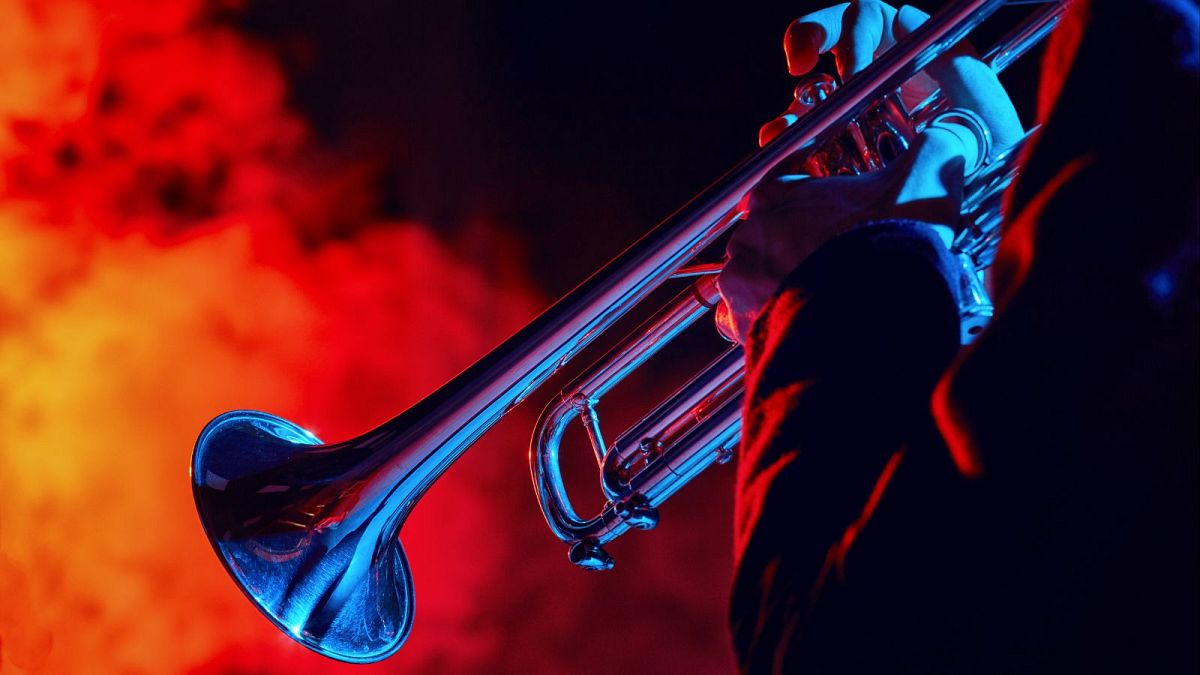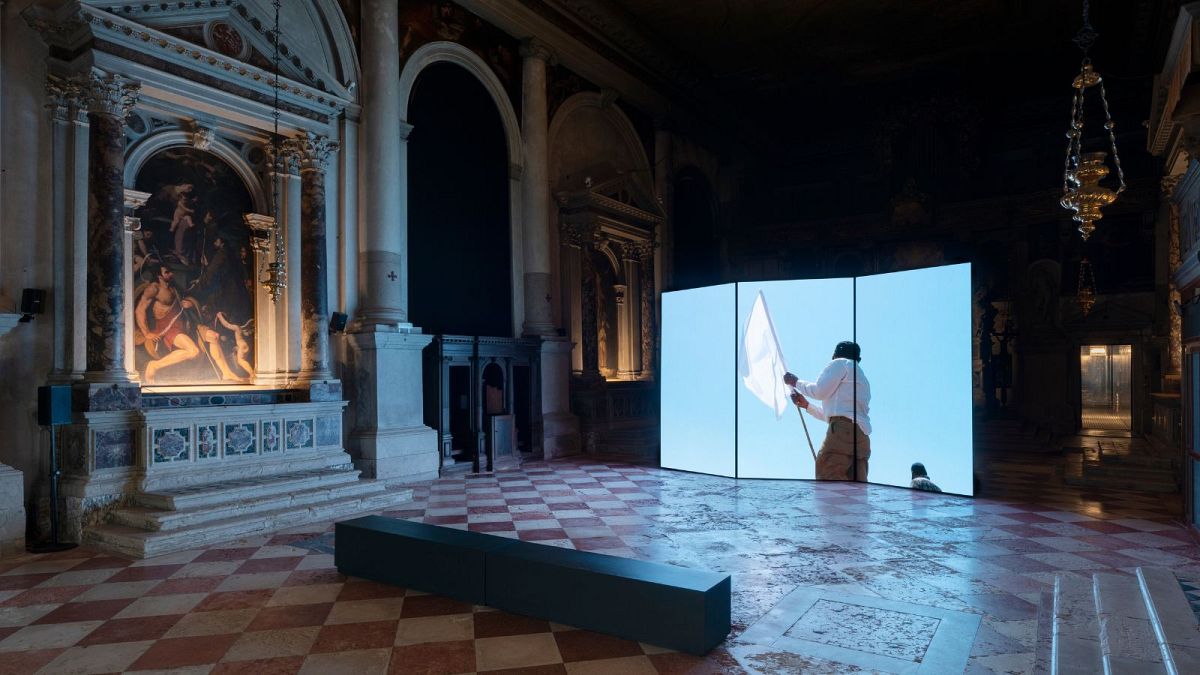
Inside Daisy Jones & the Six’s Most Resonant Needle Drops
Daisy Jones & the Six is a series that proudly put a lot of time, energy, and money into crafting original music that doesn’t sound like a Free People ad campaign. The results were a mixed bag — and, as our Aurora song ranking attests, more of a personal preference anyway. But setting any rock drama in the 1970s was bound to be heaven for the music supervisor who lucked into the gig, with the show’s ten episodes lining up an impressive coke snort of artists that would take another article to list in entirety. The honor went to Frankie Pine, who worked alongside showrunner Scott Neustadter to select the best songs to soundtrack the series’s most pivotal scenes. Here, we went episode by episode to discuss the needle drops that defined the heart of Daisy Jones.
Episode 1
The song(s): Carole King — “Goin’ Back” and “I Feel the Earth Move”
<p>The context: Daisy plays “Goin’ Back” for Simone and discusses her admiration for King’s songwriting skills; “I Feel the Earth Move” ends the episode by signifying a sense of hopefulness for the characters breaking into the Los Angeles music scene.</p> <p>The story: “The Carole King aspect was written into the script. It was a connection to Daisy, of being an amazing songwriter writing all of these songs for so many different artists. On that particular Carole album, she decided to record certain songs herself, even though she had a plethora of songs at that time. I put ‘I Feel the Earth Move’ on a playlist and it was quintessential of how Daisy would be feeling at that moment, walking out of her first performance to an audience of no one. And it represented the feeling of the Dunne brothers coming into L.A. for the first time.”</p> <h2>Episode 2 </h2> <p>The song: Dusty Springfield — “Son of a Preacher Man”</p> <p>The context: Teddy approaches Daisy at her work at a diner, where he pushes her to improve her songwriting skills. “By the way, this is a song,” he says, playing “Son of a Preacher Man” on the jukebox as he walks out.</p> <p>The story: “This was a song that was scripted. If I had an issue or a problem with something that was scripted that didn’t make musical sense, it was up to me to chime in and make those changes. This song was perfect and I didn’t need to do that. We wanted it to be someone that was female because it would be representative to Daisy — a strong female singer but still a very feminine quality to it. It’s just an iconic song, one even my daughters would know.”</p> <h2>Episode 3 </h2> <p>The song: Patti Smith — “Dancing Barefoot”</p> <p>The context: Soundtracking the opening credit sequence for every Daisy Jones & the Six episode.</p> <p>The story: “Scott and I talked about it being a Daisy Jones song but we didn’t want to let the cat out of the bag at the beginning of each episode. We thought about a song that would have been of the later part of the ’70s that allows the audience to build up to the sound during that era. Of course, we wanted something that reeked of coolness.”</p> <h2>Episode 4 </h2> <p>The song: The Faces — “Ooh La La”</p> <p>The context: During a blackout at a party hosted by Billy and Camilla, the Six and guests enjoy a singalong together.</p> <p>The story: “That song wasn’t scripted. It was very much, ‘What are we going to do in this scene that everyone would know and recognize?’ We went around a lot of songs for that. I made a couple of playlists, and when this song came up Scott was like, ‘Oh my God, Frankie. I love this song so much,’ but it reminded him too much of the final scene in Rushmore. So I was like, ‘Scott, that movie was so long ago, I really don’t think people are going to equate that. Let’s just do it.’ He finally acquiesced.</p> <p>“We knew it needed to feel like it was impromptu in the scene. We did a very minor pre-record but the rest of the record came from set that day — we pulled pieces of it together to create that super realistic moment of the lights going out and Karen wanting to entertain. During the Laurel Canyon days of the ’70s, people would just pick up a guitar and start singing and everybody would join in. We really wanted to represent that.”</p> <h2>Episode 5 </h2> <p>The song(s): Barry Manilow — “Could It Be Magic” and “I Write the Songs”</p> <p>The context: Graham’s new girlfriend defends her love for Manilow while “Could It Be Magic” plays on the radio, much to the disgust of Graham and Karen; “I Write the Songs” cheekily soundtracks Graham and Karen succumbing to their mutual attraction for the first time.</p> <p>The story: “It wasn’t about being hateful to Barry. It was about showing the different styles of music from the ’70s. There was a kudos to Barry in the sense that he was doing what he felt as an artist. He was performing what he felt in his heart. Music wasn’t made and created to be a single back then like it is today — not until the late ’70s when disco became more of a singles-related genre rather than albums. In the early ’70s it was all about records and not songs. Barry Manilow represented that.”
The song: The Beach Boys — “In My Room”
The context: Billy tells Daisy the song was his “first love.”
The story: “We did a little research in regards to Billy’s age and what he would have been affected by. We had to check all the dates to make sure every song was within the time period of each episode, and we consciously chose something that was California as opposed to something from the Midwest. There are lots of great bands from the Midwest in the show, but I think the Beach Boys were more of a reflection of Billy’s style of writing.”
The song: The Dixie Cups — “Iko Iko”
<p>The context: Daisy tells Billy it was the first record she purchased with her own money.</p> <p>The story: “We wanted to represent when music makes an impact on you when you were a kid. For Daisy’s age, it would have been a very specific time period; I went back and played around with multiple playlists through that period. ‘Iko Iko’ was perfect.”</p> <h2>Episode 6 </h2> <p>The song: Heart — “Crazy on You”</p> <p>The context: Daisy unexpectedly leaves for Greece during the height of the band’s fame.</p> <p>The story: “This is a good example of how we wanted to cherry-pick our iconic songs. Heart is amazingly iconic. It was trying to represent those big, big songs from the time period that made us all feel happy, but it also allowed the Daisy Jones & the Six songs to be what they were. Because of where the story was headed, we agreed it was a great place to put an iconic song. It was important to know what year we were in, and with ‘Crazy on You’ you immediately know.”</p> <h2>Episode 7 </h2> <p>The song: Gloria Gaynor — “Honey Bee”</p> <p>The context: Simone makes her grand entrance into the New York City disco scene at a club where her soon-to-be girlfriend works as a DJ.</p> <p>The story: “Because this was the early disco era, it was about finding these special gems of disco music that didn’t get the same kind of love as, say, Donna Summer. I got a very interesting task from the director, Will Graham. He was like, ‘I want you to dig and find me some gay disco. I want the artist to be out.’ And I was like, ‘Well, in the ’70s, not a lot of people were out in the same kind of storyline as Simone.’ Not a lot of people were comfortable enough to say they were gay. I think I found two songs that were from what I would call a gay artist, and they were songs that were played within the gay scene in New York City. They didn’t make the cut, but I feel like with the iconic nature of Gloria Gaynor in the gay community, it was really important to have something of hers in there.”</p> <h2>Episode 8 </h2> <p>The song: The Jam — “In the City”</p> <p>The context: Daisy and her new husband go on a drug and alcohol bender in their hotel room, culminating in Daisy overdosing.</p> <p>The story: “It’s drug after drug after drug. That whole scene was a fun and over-the-top jaunt. We had an Electric Light Orchestra song in there first called ‘Livin’ Thing,’ but they turned us down because of the content of the scene. So I went, ‘All right, this is my opportunity to try to get Led Zeppelin.’ I had been courting their publishing company for months. We felt strongly that we have to represent Led Zeppelin from the ’70s. I told them I had a scene and there were drugs involved. We put it together, we picked the song — ‘Living Loving Maid (She’s Just a Woman)’ — and everybody loved it. But they responded and said, ‘Unfortunately, the band has turned this down.’ At this point I kept thinking, Oh my God. Are we not going to be able to find any song to go into this scene? I kept making calls to get a read of who might be willing to do this. The Jam didn’t even ask to see the scene. They were like, ‘Cool, whatever you guys want to do.’ I’m very happy they agreed to it.”</p> <p>The song: The Bellamy Brothers — “Let the Love Flow”</p> <p>The context: Billy and Rod discover Daisy laying on the bathroom floor, near death, after overdosing.</p> <p>The story: “It’s a pretty upbeat song. What we loved about it was its ironic aspect. We snuck in a little piece of score to envelop the emotional aspect of what Billy was feeling in that moment, but we wanted to carry that sound because we come from the Jam — they’re in that room, they’re partying, they’re having fun, so it would have been multiple songs playing before Billy goes to knock on the door. I think about how Billy must have felt or reacted when he saw Daisy laying on the floor. Then his love came pouring out.”</p> <h2>Episode 9 </h2> <p>The song: Fleetwood Mac — “Gold Dust Woman”</p> <p>The context: Daisy wakes up in her hotel room following her bender. This is the sole use of Fleetwood Mac, which inspired the original Daisy Jones & the Six novel, in the show.</p> <p>The story: “We were very resistant because we knew there would be that comparison. All of us went into this saying there’s not going to be any Fleetwood Mac songs in the whole series, but as they were cutting that scene and playing around with a bit of the fogginess and slow motion, it was kind of like, Duh, ‘Gold Dust Woman’ has to be here. It added eeriness to the moment. We couldn’t deny it. Fleetwood Mac is pretty excited about it, so that makes me happy — they do have approval on everything and we were able to obtain it. I’m excited that they’re excited.”</p> <h2>Episode 10 </h2> <p>The song: The Rolling Stones — “Shine a Light”</p> <p>The context: In the present day, a hopeful Billy decides to visit Daisy at her home after years of estrangement. “Shine a Light” soundtracks the show’s final scene and bleeds into the credits.</p> <p>The story: “Originally we cut a Tom Petty song. The edict on this scene was that we didn’t need the music to be time-specific; it just needed to be representative of what can bring a smile to your face. But it’s also like, come on, it’s a show about the ’70s. How can we not have the Rolling Stones? We worked on the edit to match her smile to where it hits in the song. Another edict given to me was, ‘I need you to make me cry.’ If I made you cry, I did my job.”</p> <h2>Related</h2> <ul> <li>Every Song on Daisy Jones & the Six’s Aurora, Ranked </li> </ul>








































































